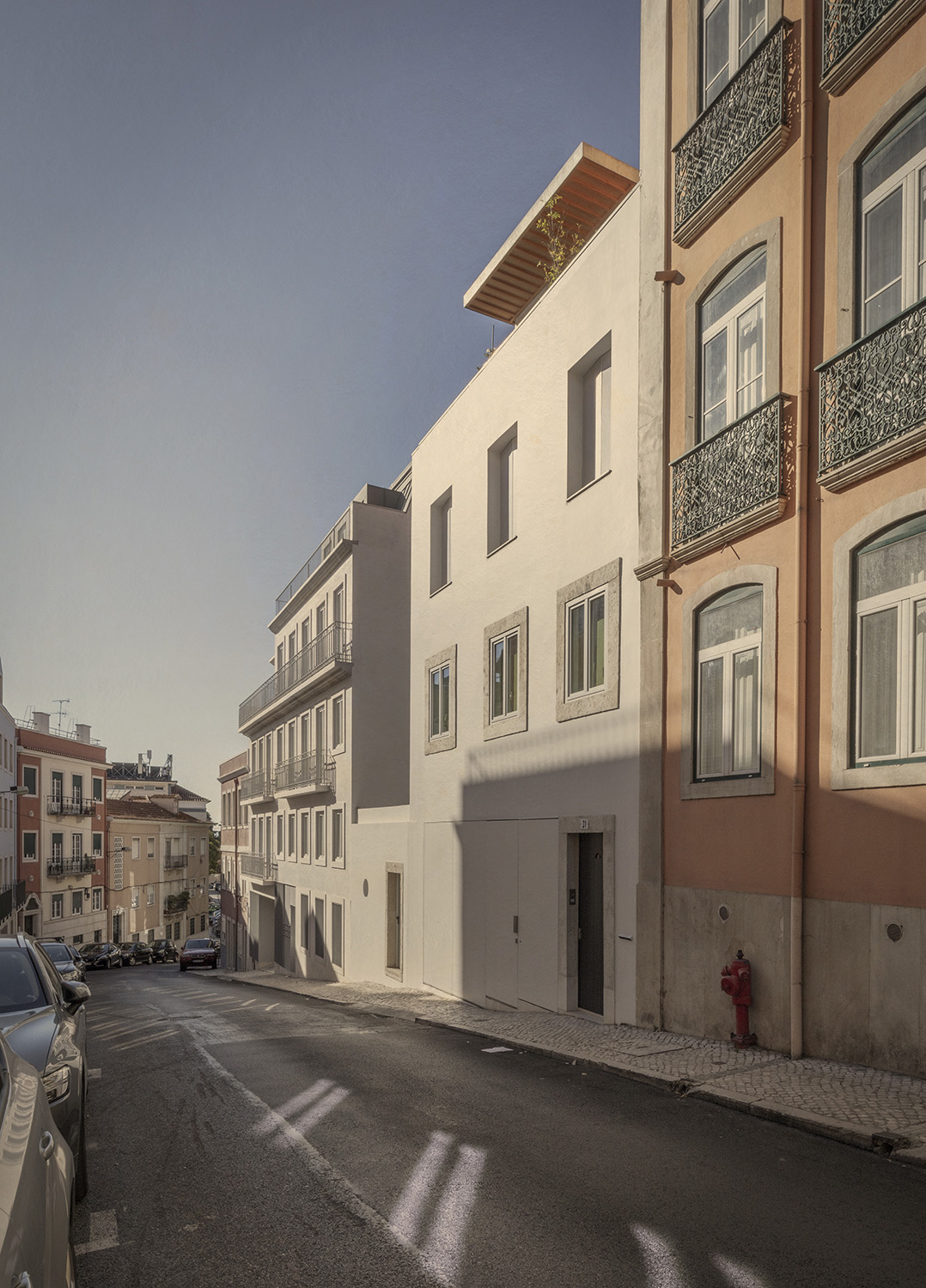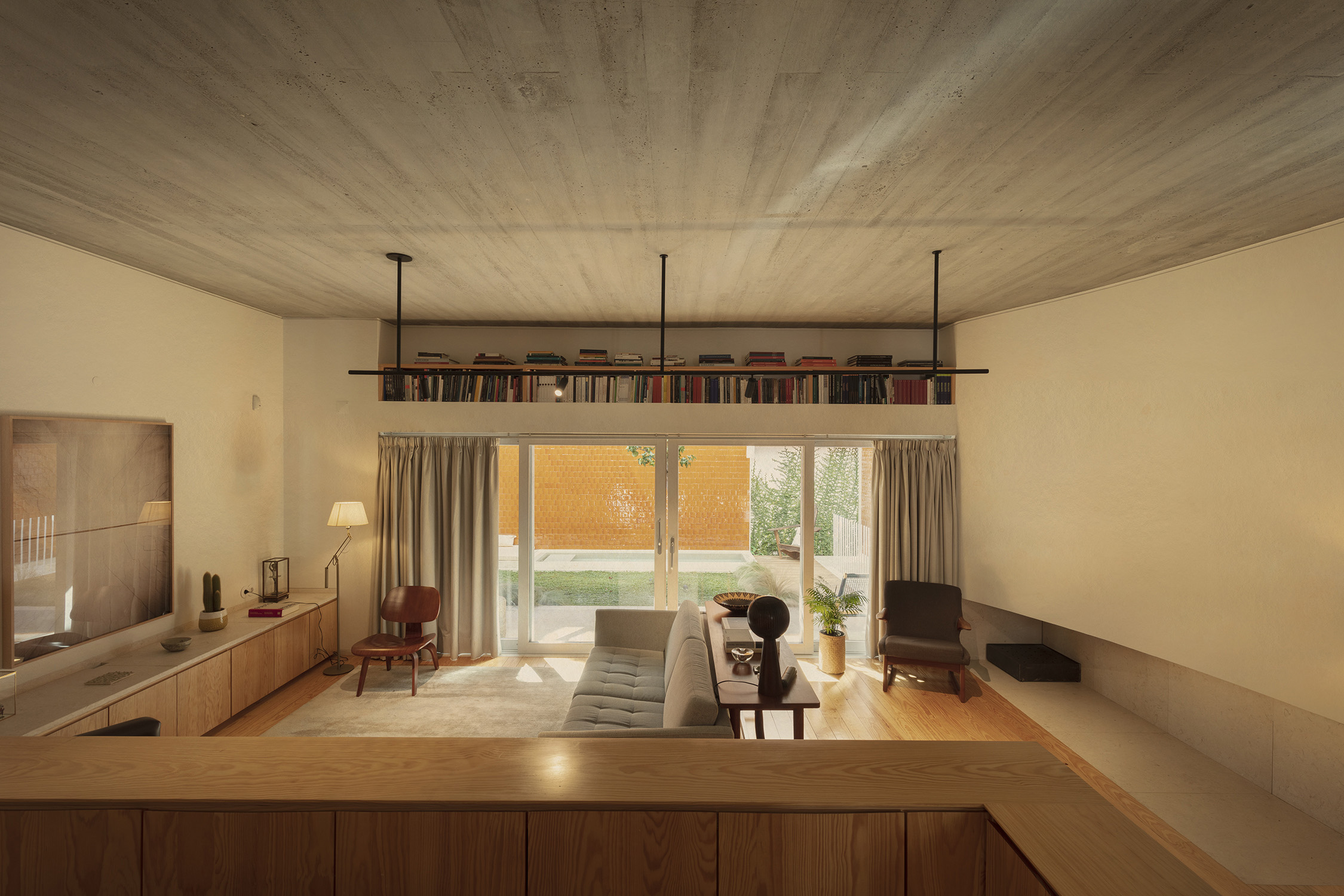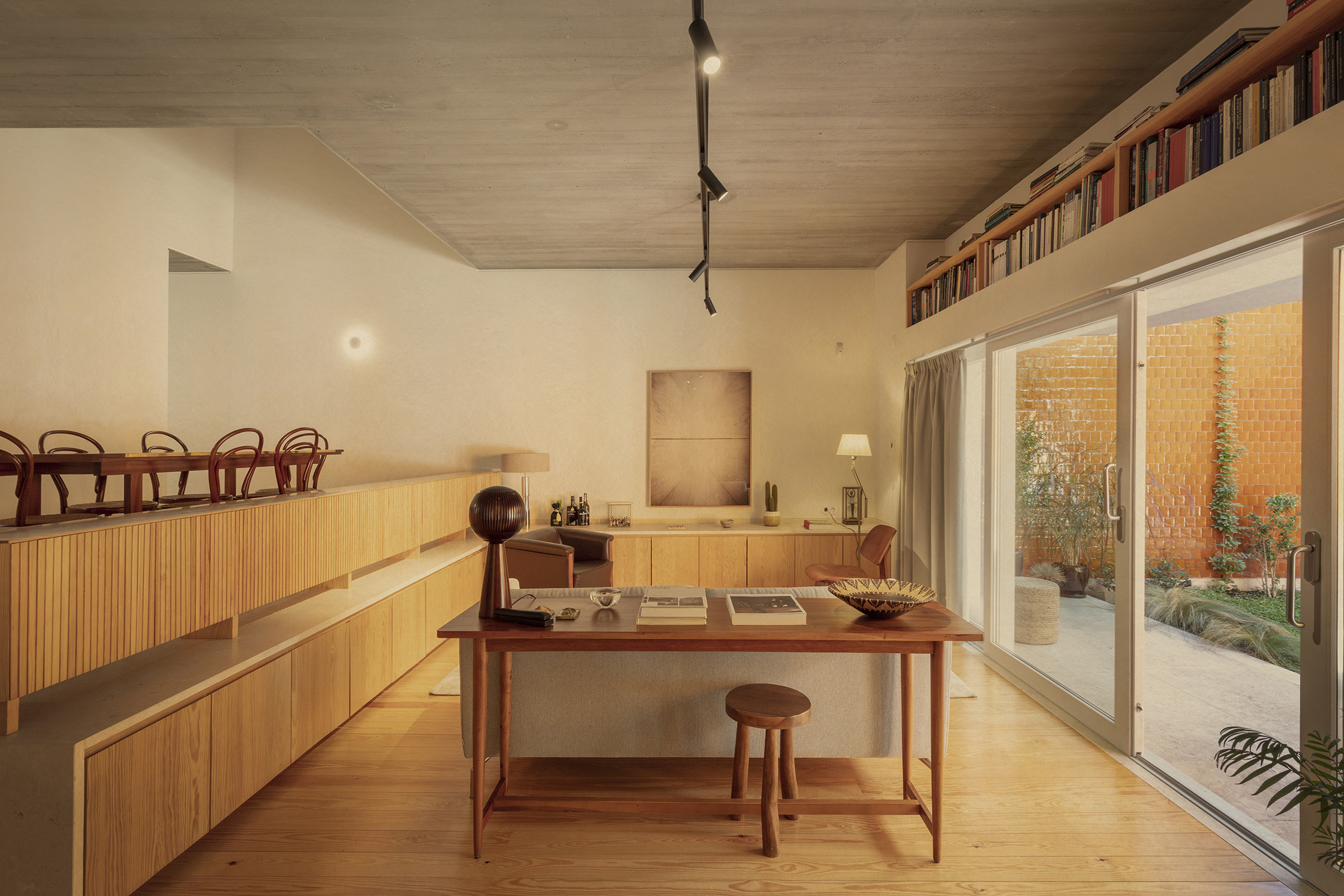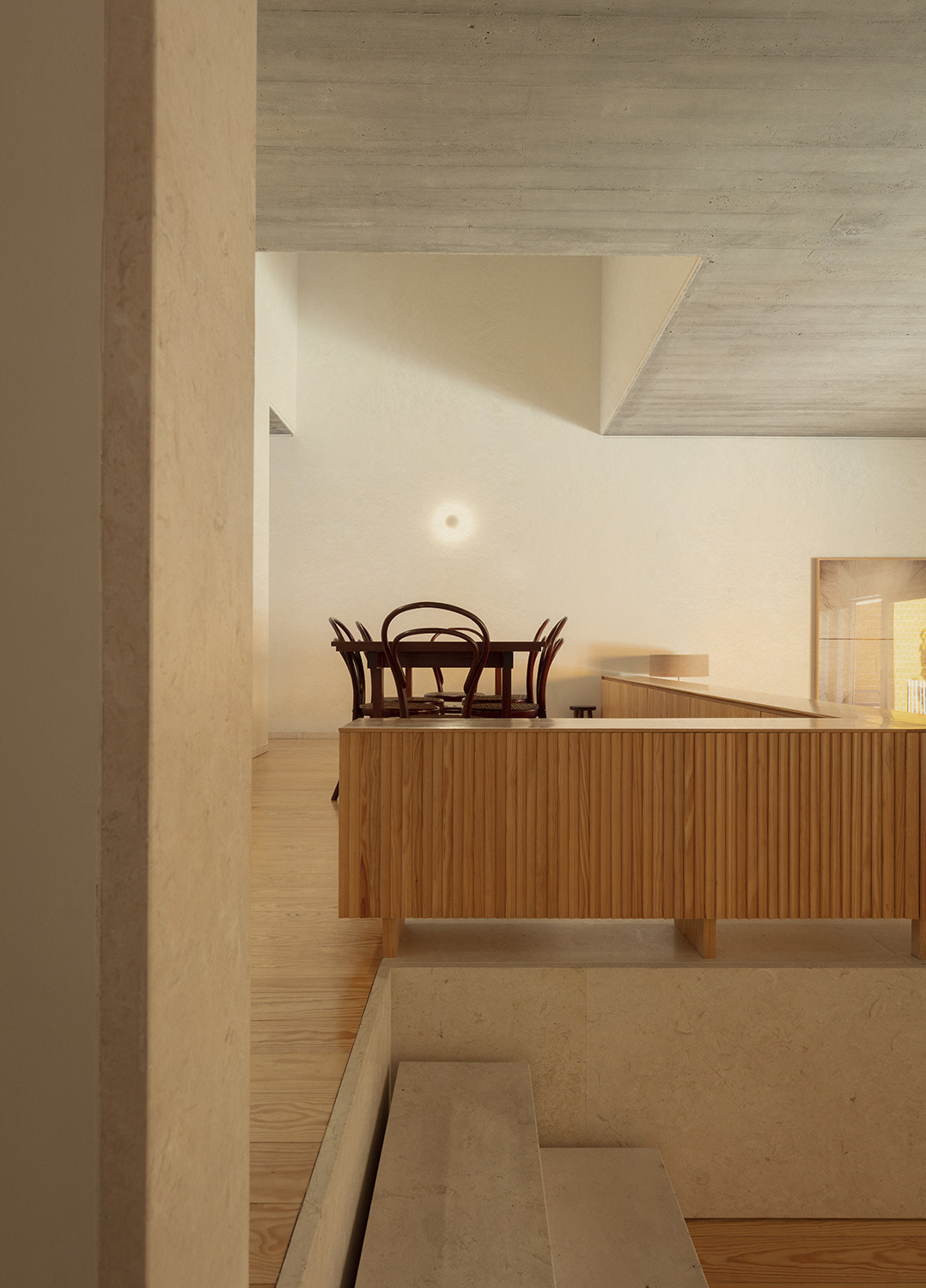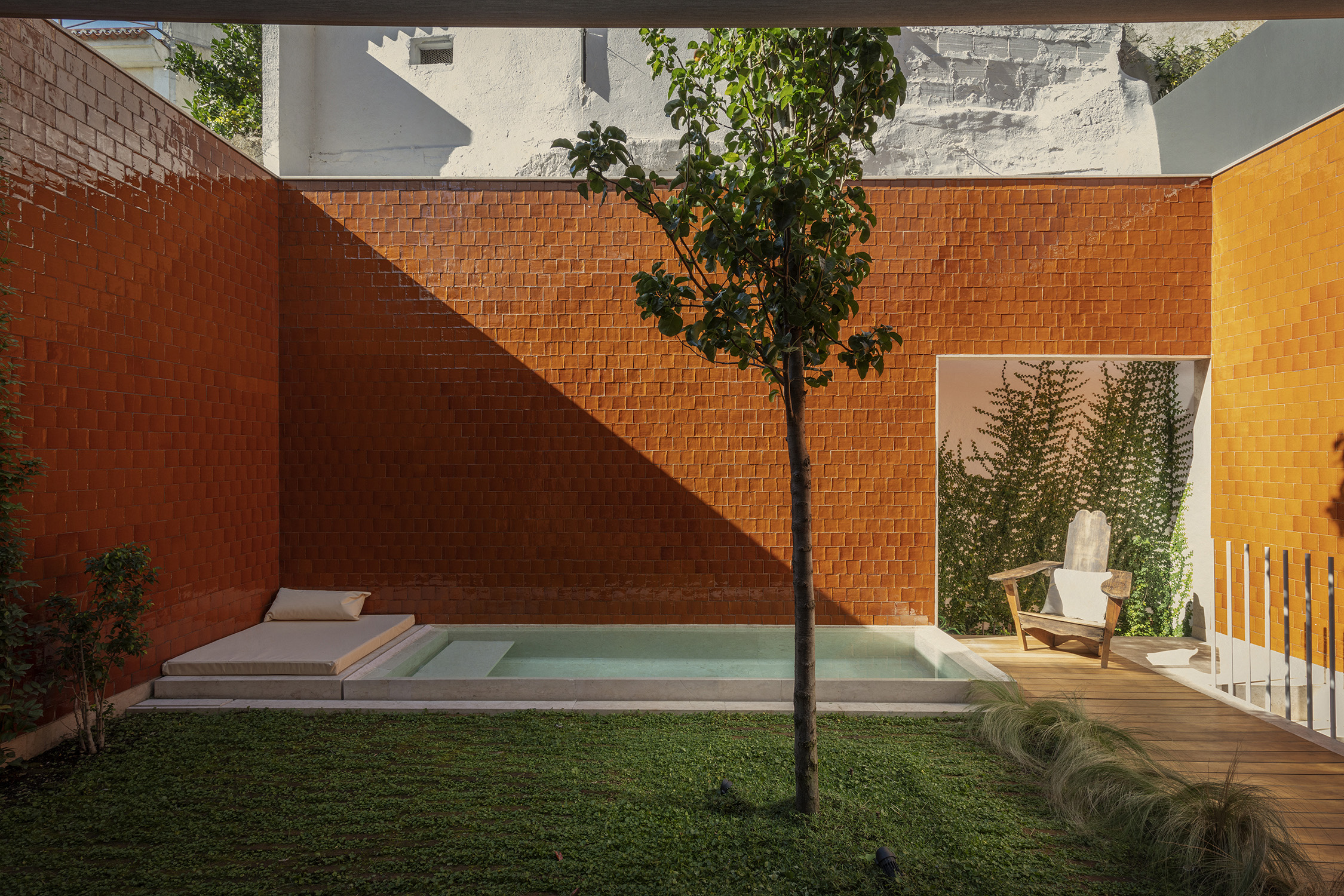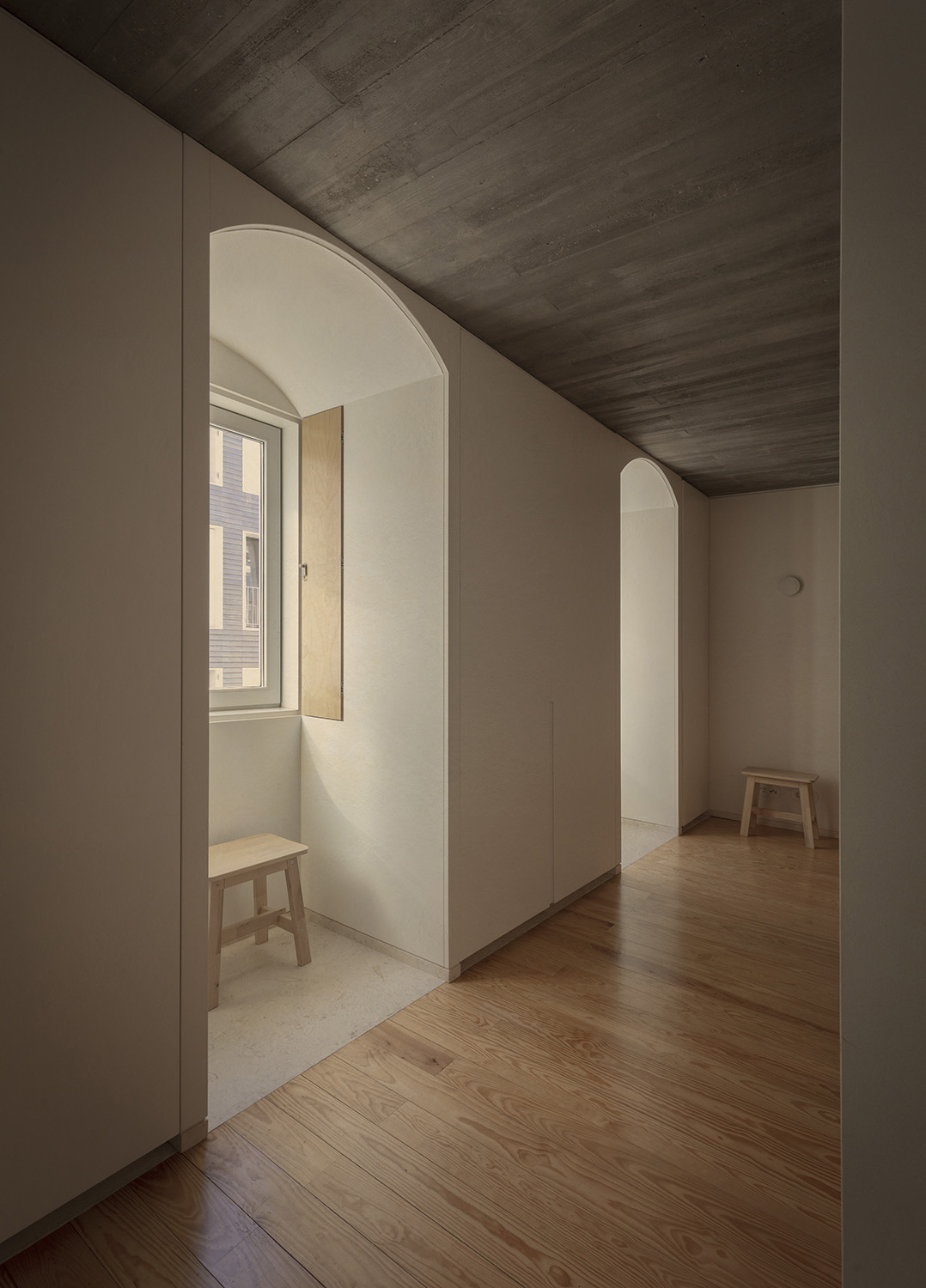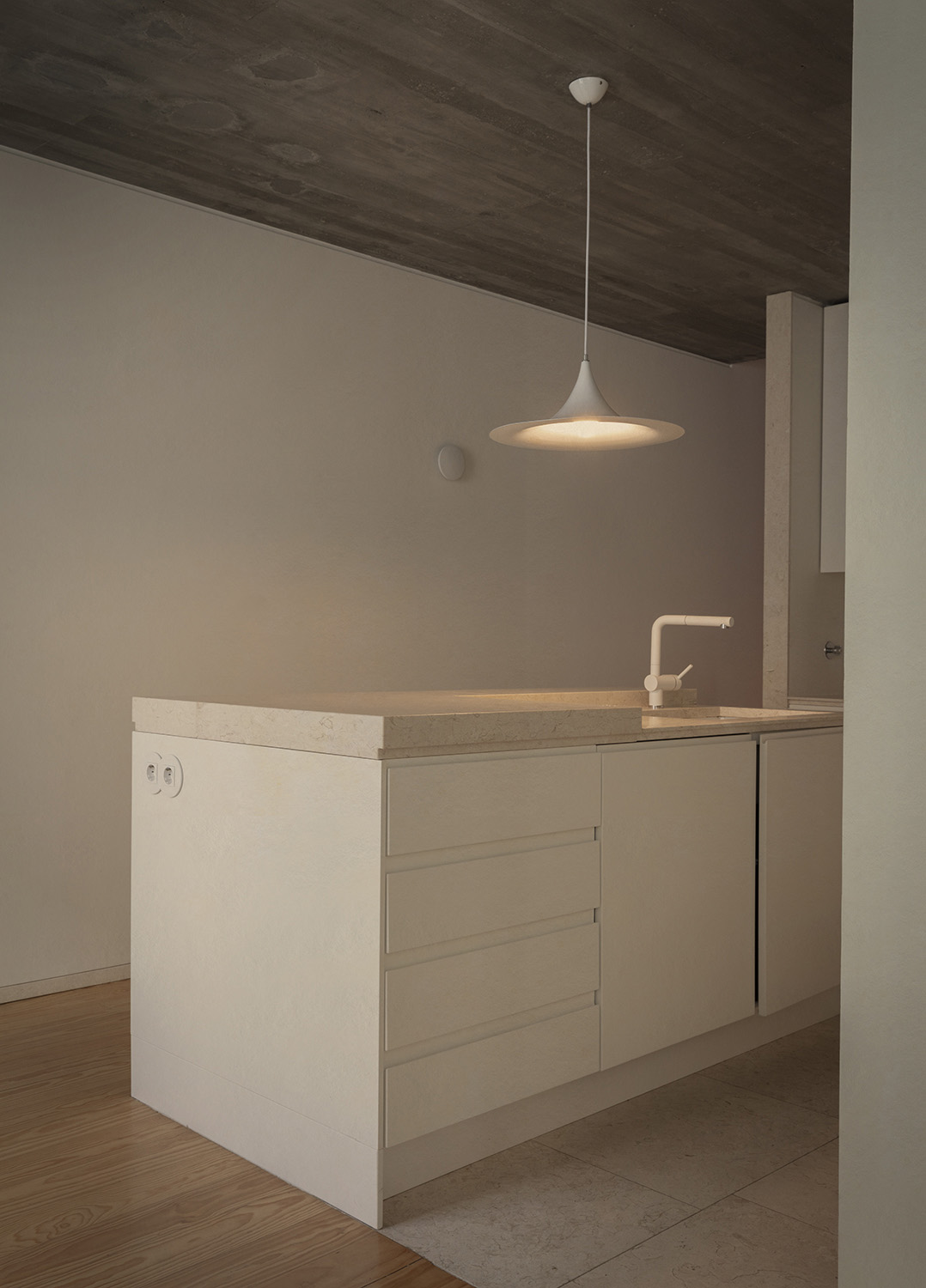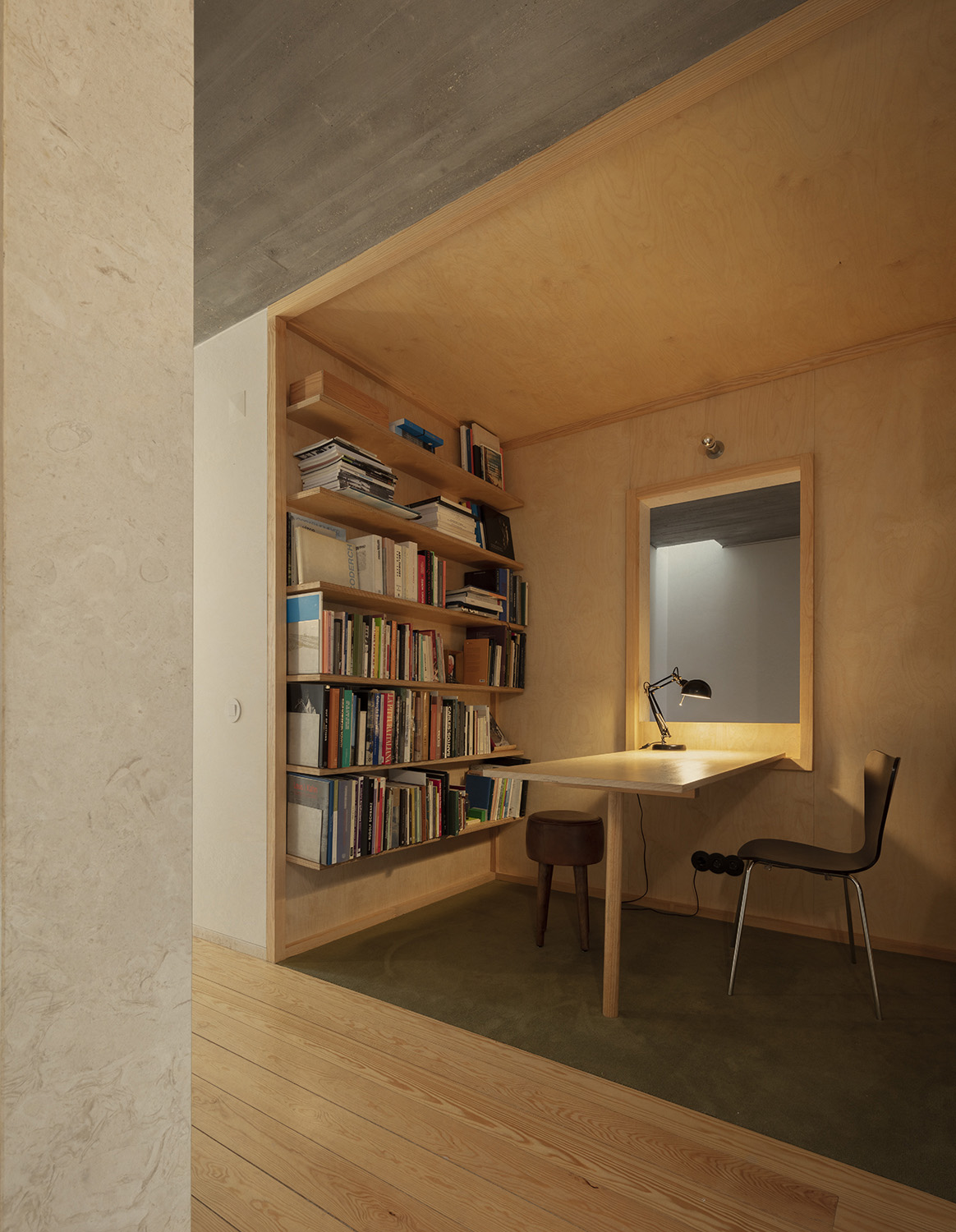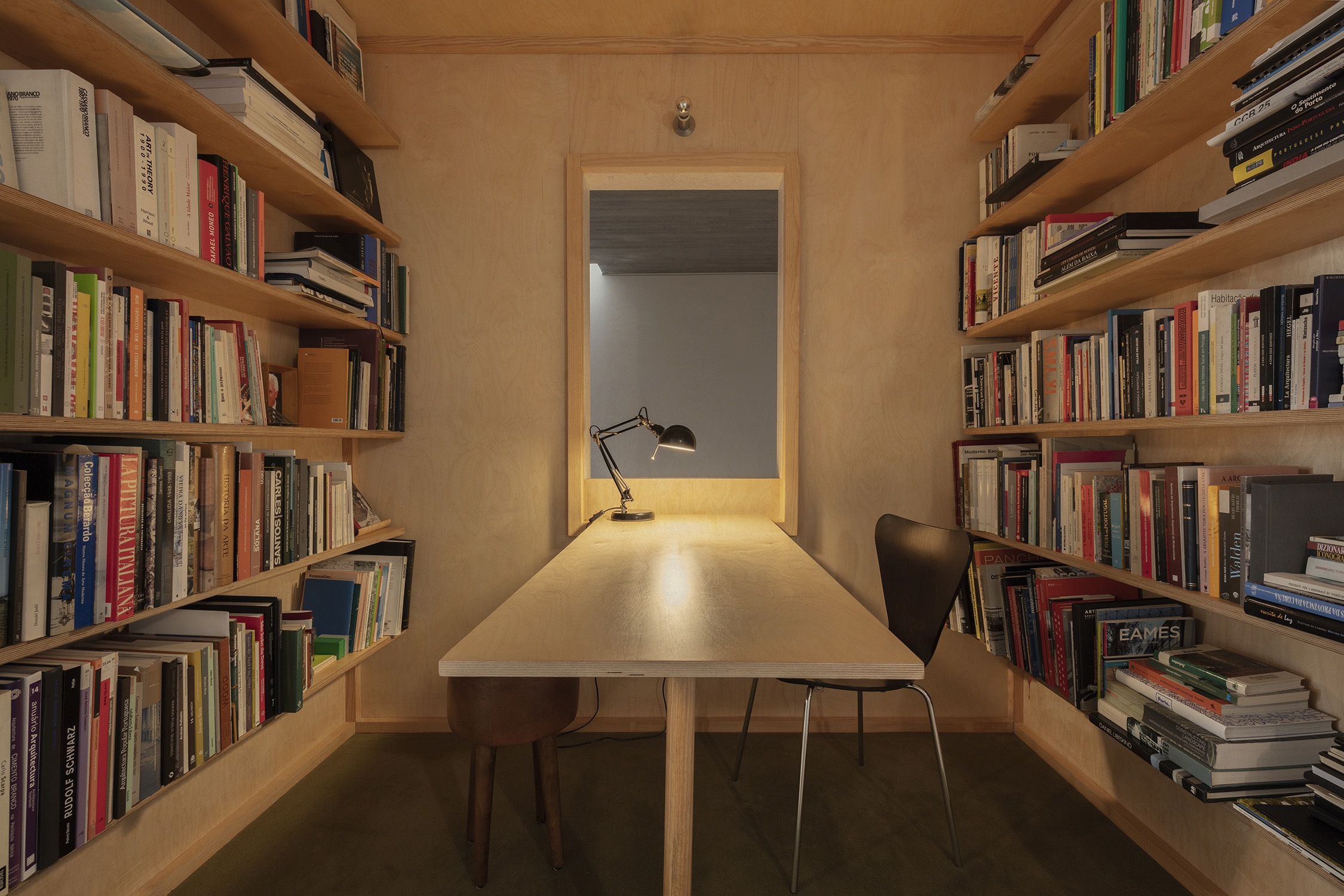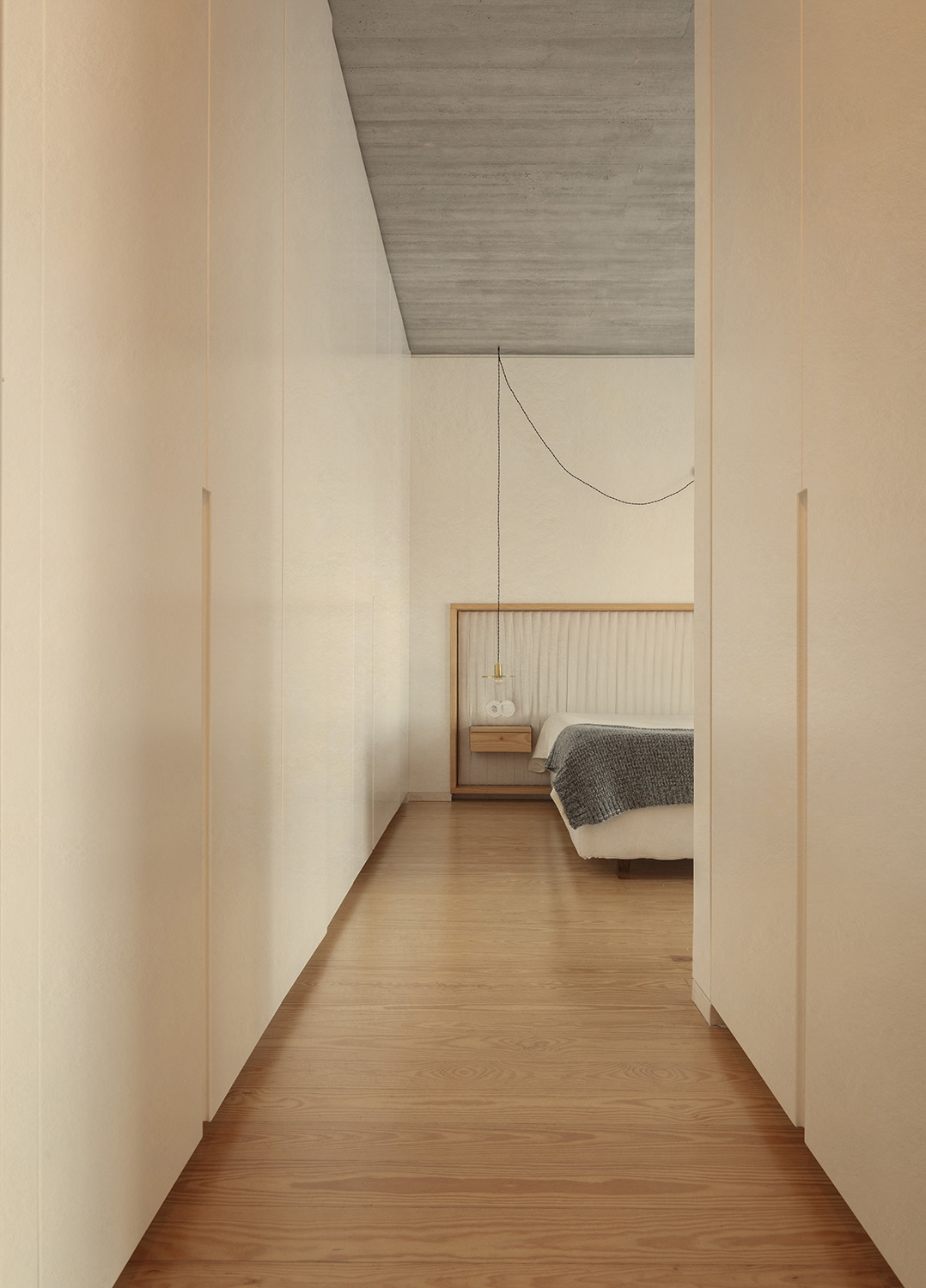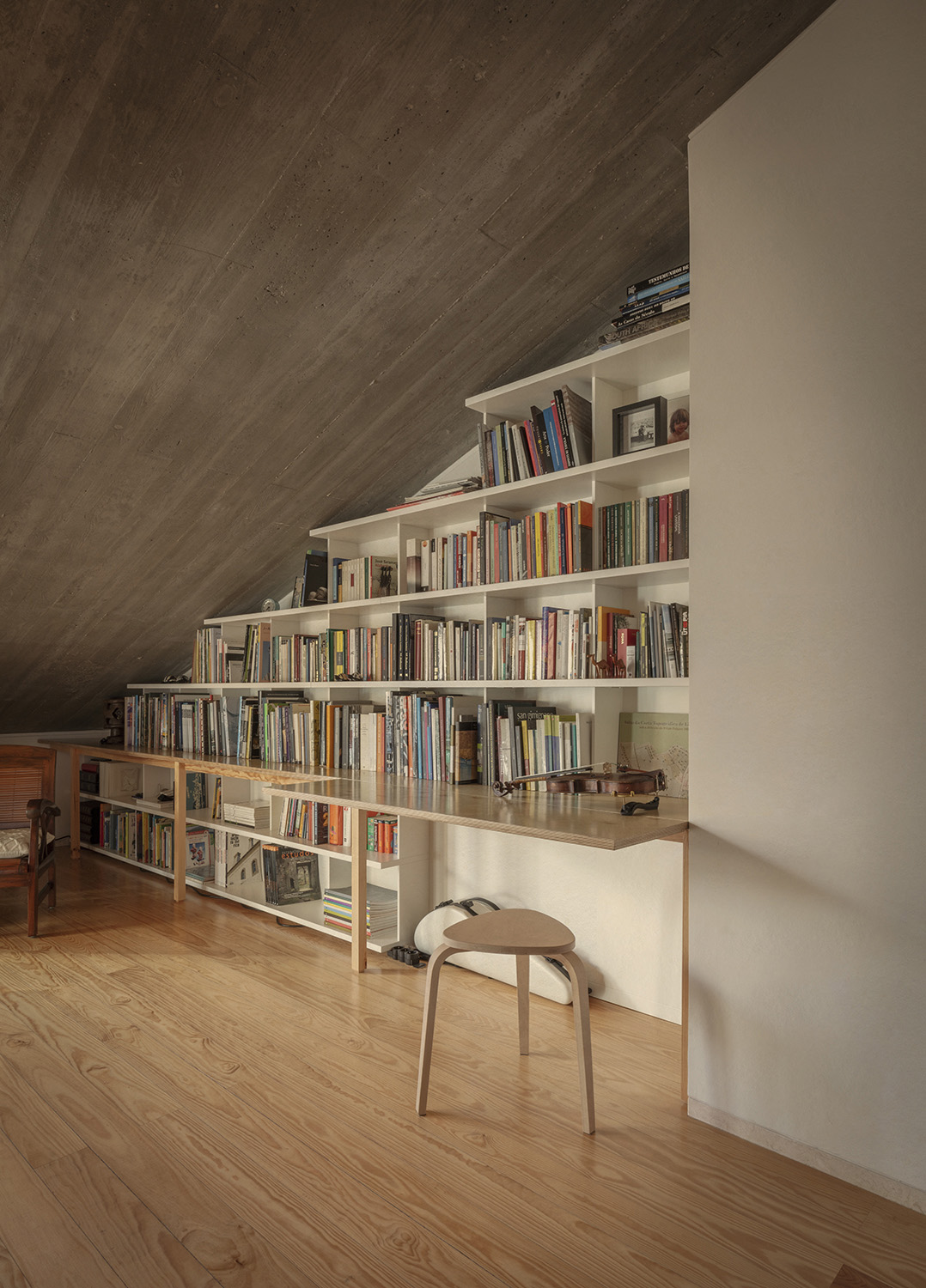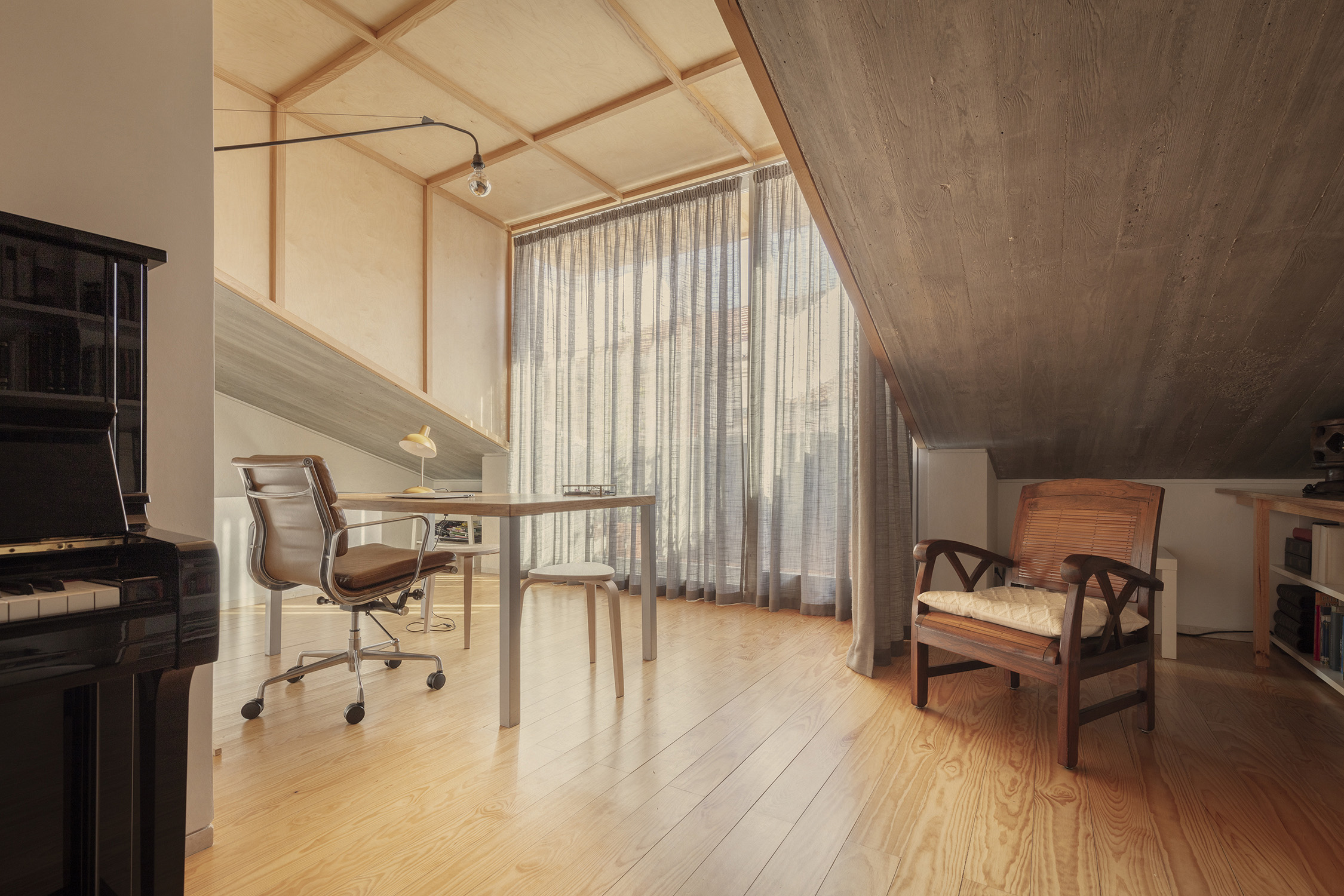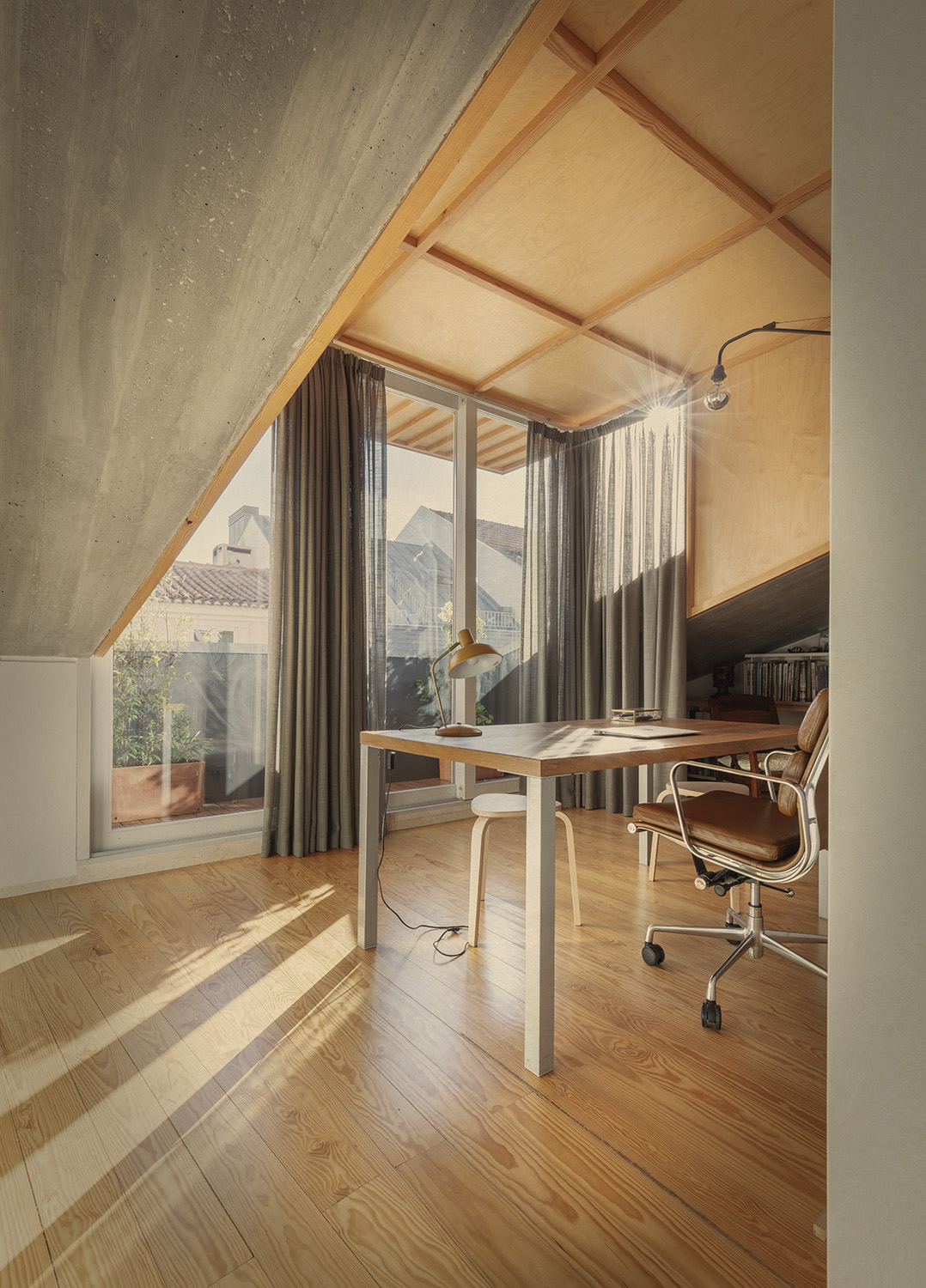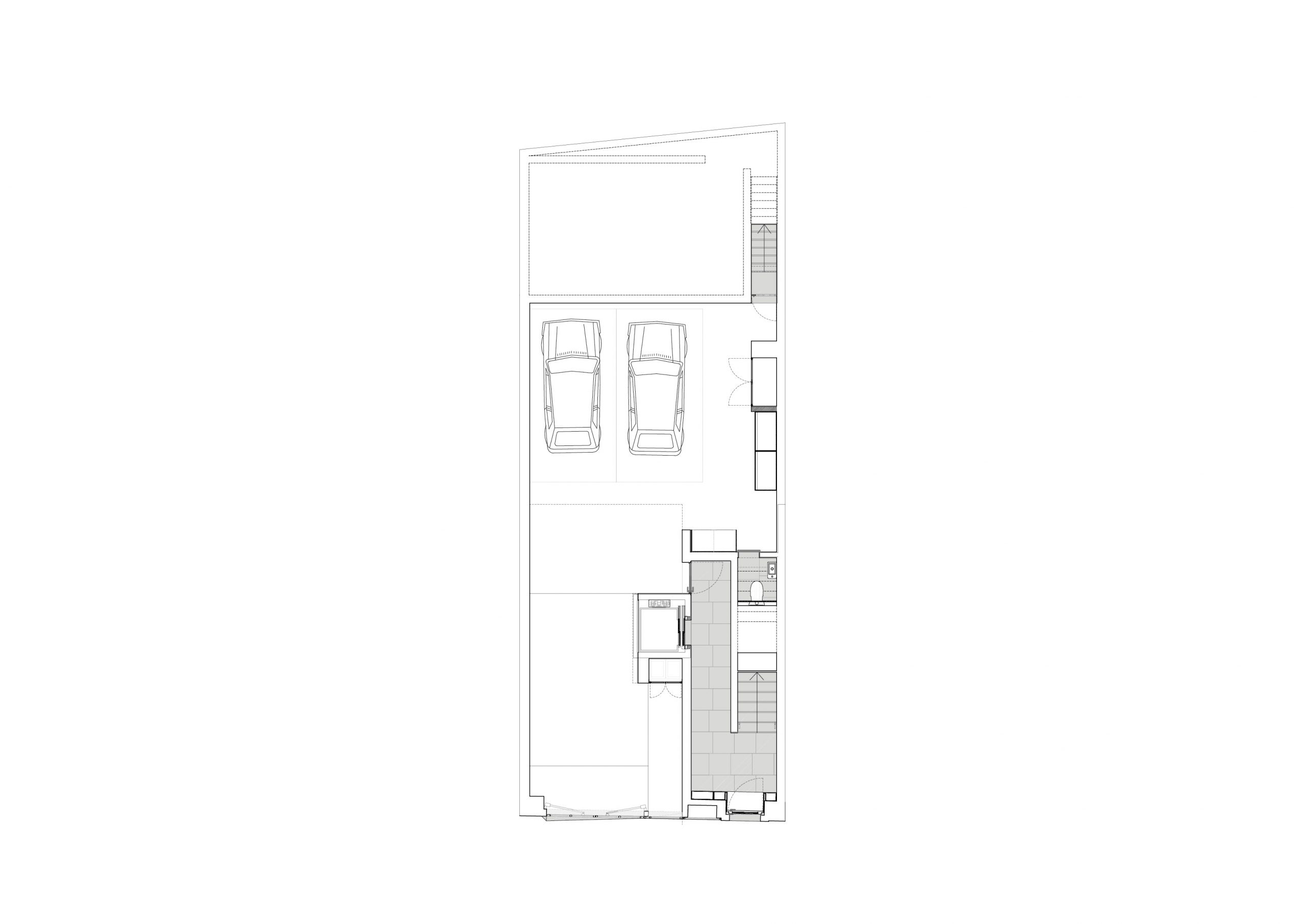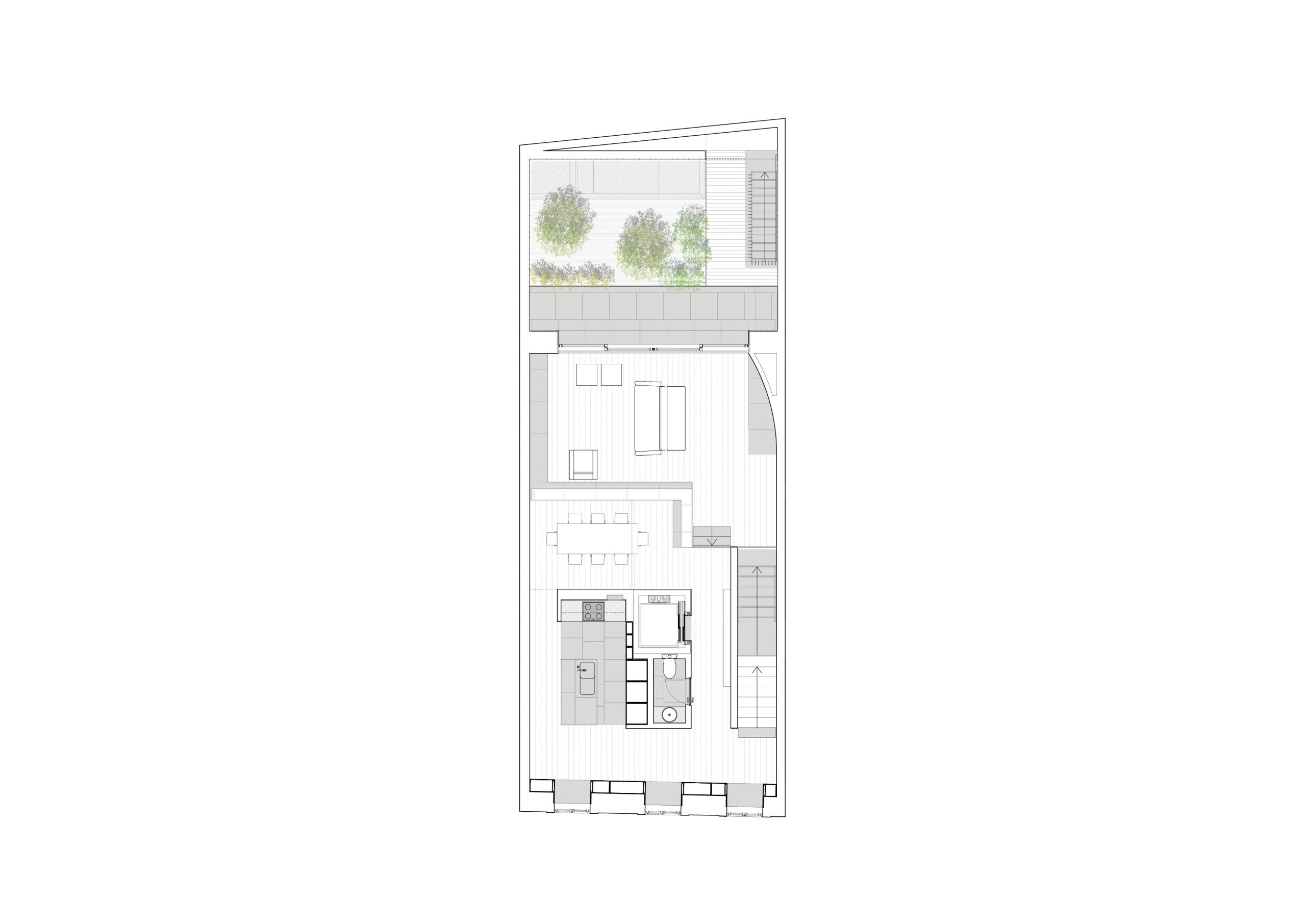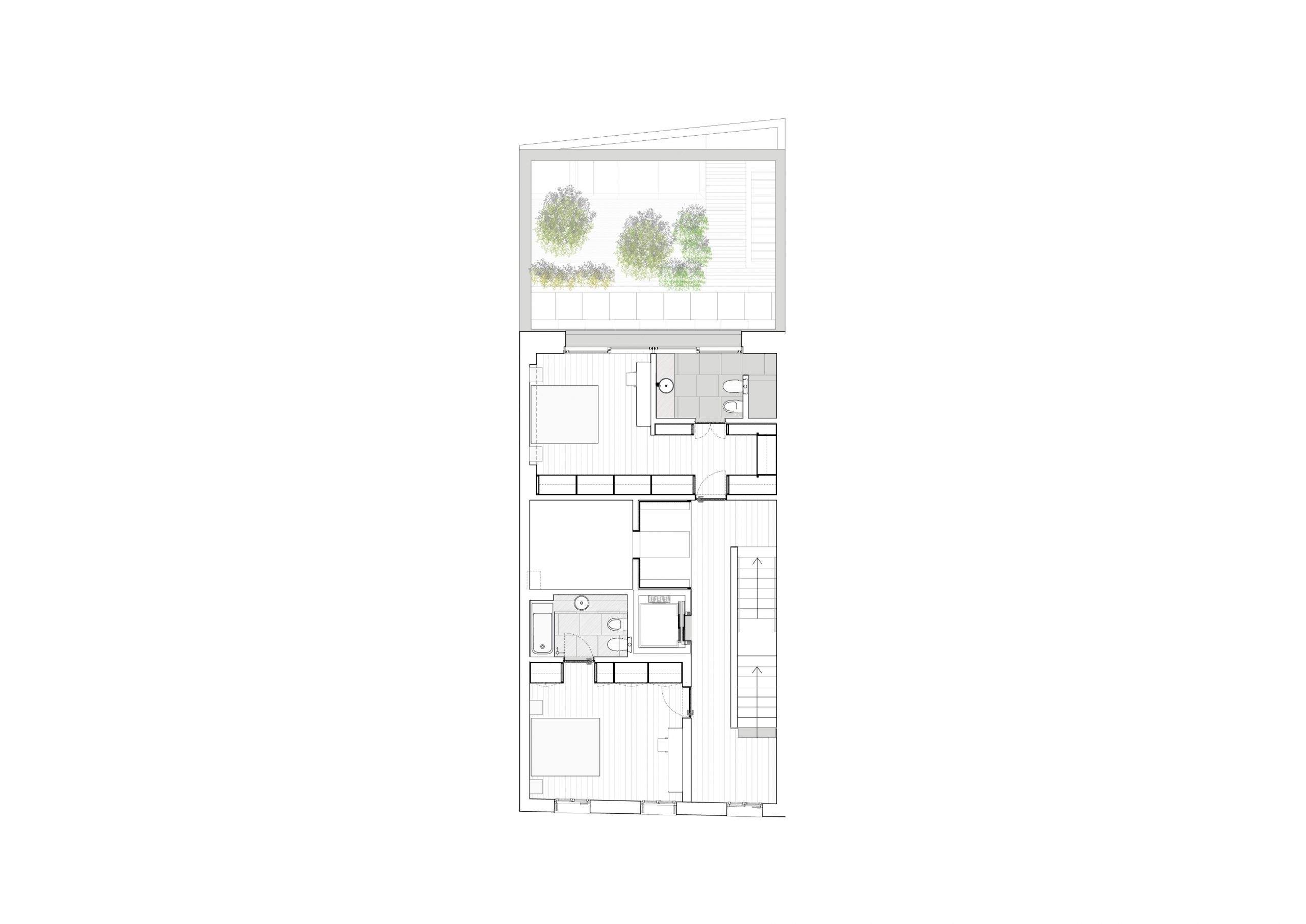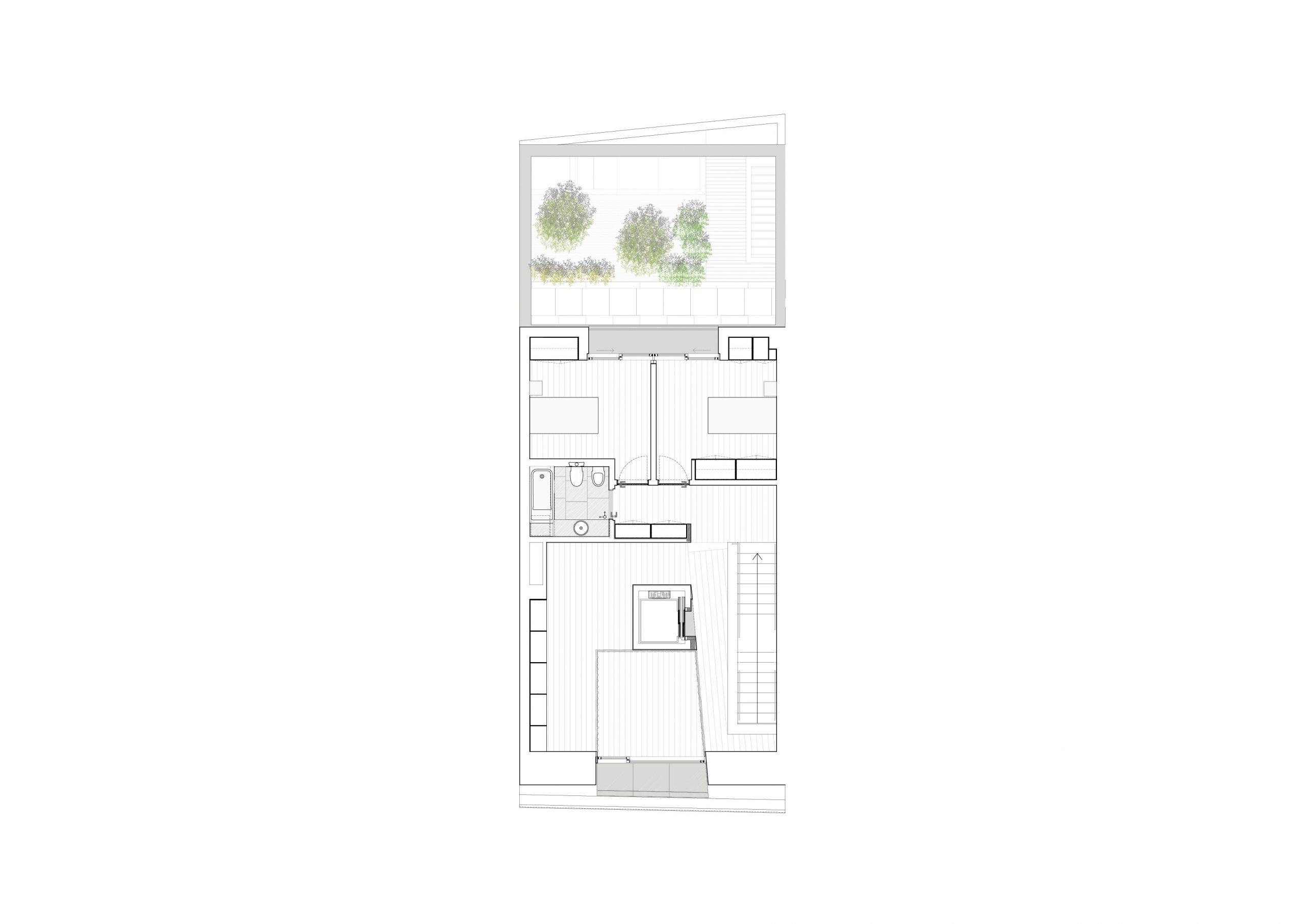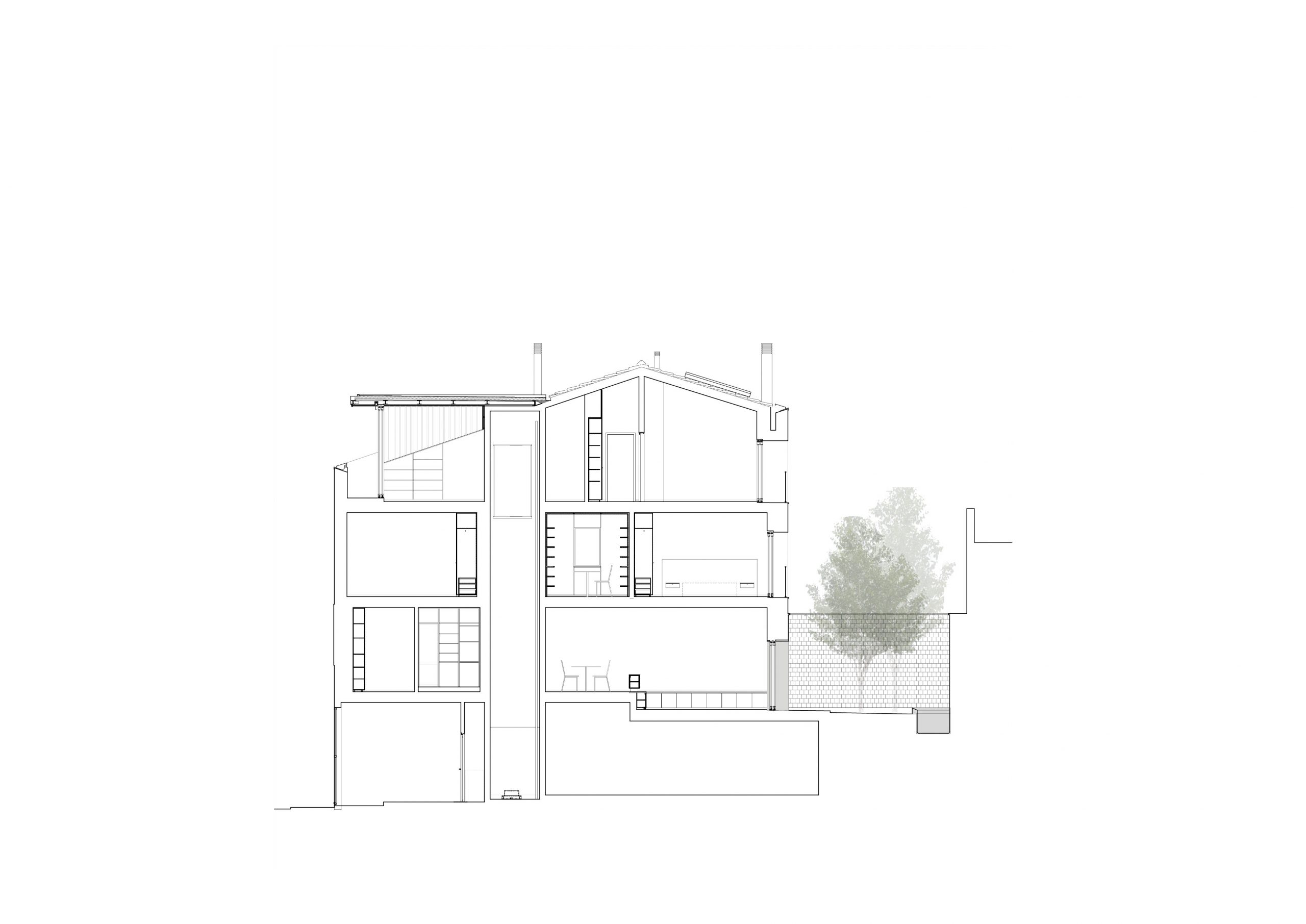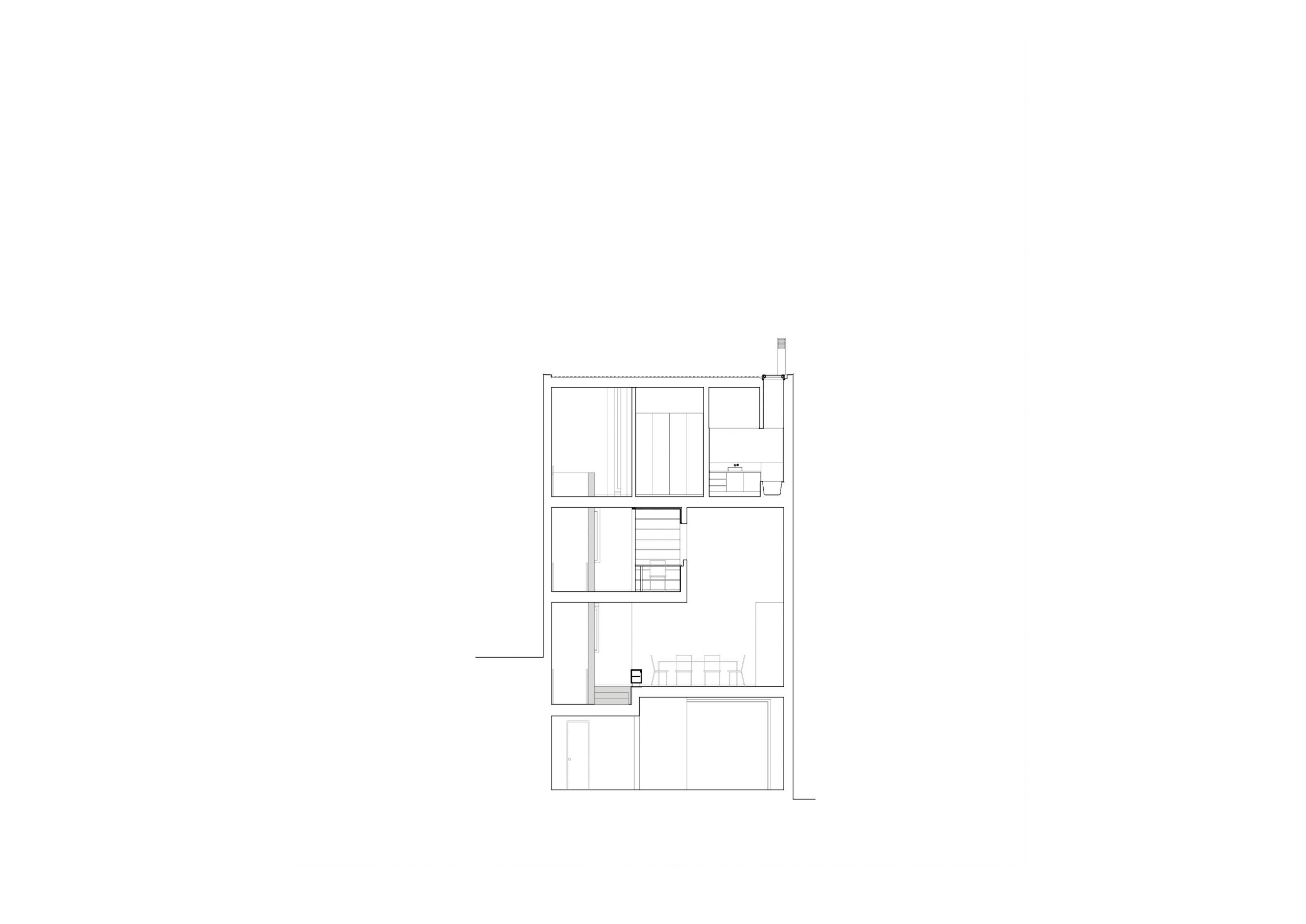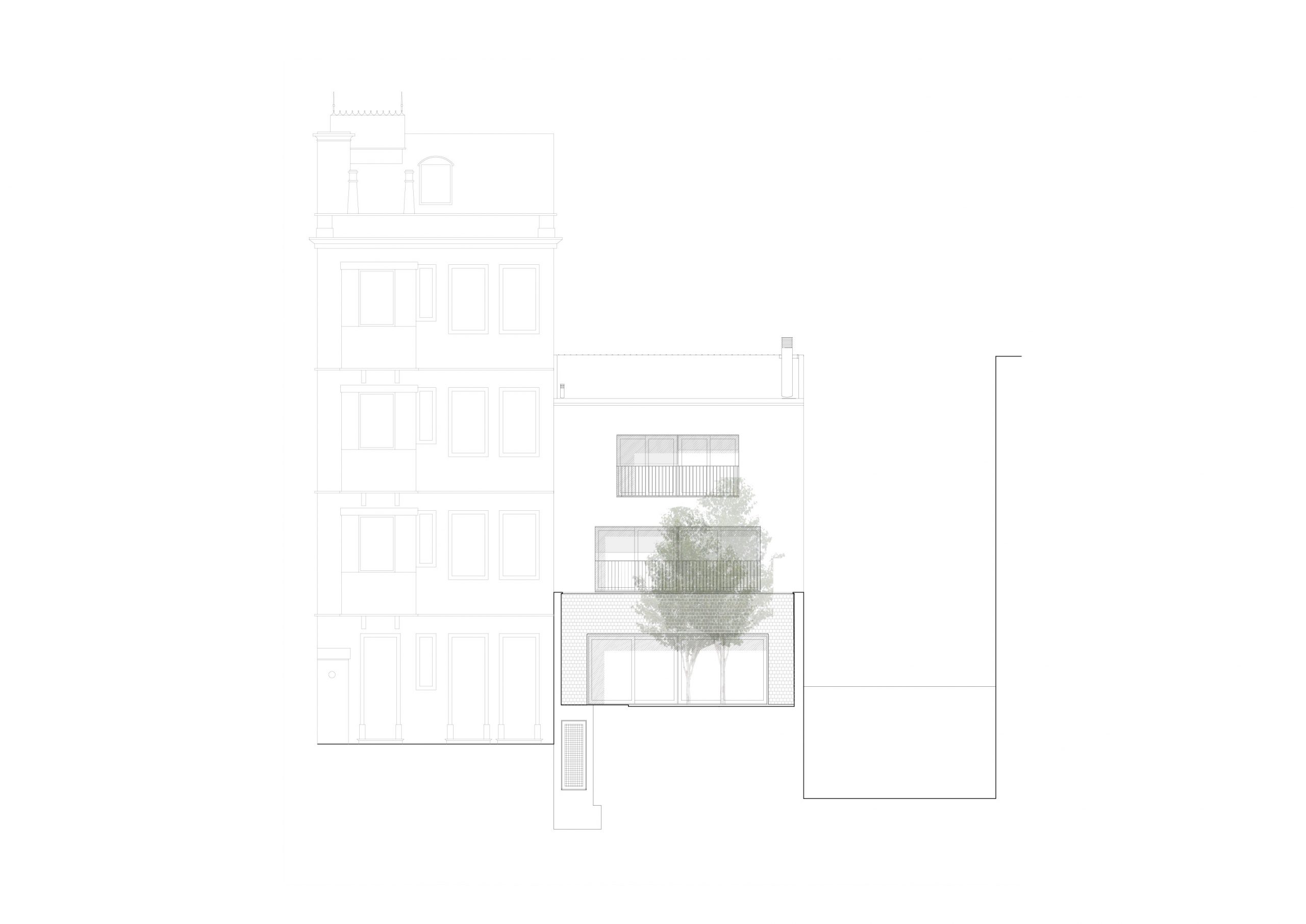|
MIES VAN DER ROHE AWARD 2024 NOMINATION
Santa Isabel is a parish of Lisbon, located close to the romantic Estrela Garden. The neighborhood urban structure was planned in the 18th Century when fences of several convents and monasteries were demolished creating new urbanization plots. During the 19th century the image of the city in the area had changed with new streets and residential buildings, projected by real estate speculators, following the typologies and ordinary solutions of the time.
The intervention area resulted from this process. An old two-story building, from the 19th Century, featured the plot. Its damaged wood structure was considered in risk of internal collapse due to successive transformations done all over the years.
The project answered to a single-family house program, aiming at reaching a timeless architectural expression. The design departure from the existent building, integrating parts of the former facade in the renovated morphology, which received a new floor.
The intervention concept was based on proportion manipulation and details, intending to inscribe architectonic options in the sense of the city continuity. Preserved elements defined the composition, contributing to dilute the limits of the time in the building architectural image.
New windows were deployed in the internal side of the facade, blinded by wood elements. The garage doors, in steel, are coplanar with the facade. Light gray color embraced all the composition, excepting the entrance door painted at dark gray and the wood roof of the dormer, creating a subtill vibration on the set.
Internal organization was adjusted to the existent topography. Above the garage and the entrance hall, the social areas of the house were opened to the backyard patio coated by caramel color tiles. The area has two levels, one of those correspond to the living, in direct connection with the patio, the other integrates the kitchen and the dining room with double ceiling height in the core of the house. The space, was designed as a three-dimensional structure, characterized by the interior volume and the openness to the exterior, following the filtered light of the patio.
The nude concrete ceilings of the house results from wood clapboards formwork. Despite revealing the new structure, its appearance establishes a relationship with the former timber system used in the original construction. The light inside is filtered by the surfaces of walls, pavements, and ceilings, producing a mysterious and calm experience.
The house spaces sequence is fluid, avoiding strict compartments. The slab steps of the stairs contribute to reinforce this idea, providing a transparent connection of all the housing floors.
The corridors were produced as parts of the house program, allowing informal and trivial activities. The cabinet, located on the 2nd floor, is one of those spaces, thought as a small library that communicates with the dining room by an internal window.
The 3rd floor dormer covers an open space, which is extended to a balcony from where it’s possible launching a view to the Tagus River. The space disposes of a bookcase and a piano, suggesting the atmosphere of an attic hovering above the city.
|
Architecture – Paulo Tormenta Pinto e Rosa Maria Bastos
Collaboration – Ivone Gonçalves, Pedro Baptista Coelho and Joana Moreira
Structures – Miguel Villar
Hydraulics – Andreia Cardoso and Rita Duarte
Electrics – Rúben Sobral
AVAC – Galvão Teles
Acoustic – Palma Ruivo
Landscape – Carlos Ribas
Construction management – Reinaldo Aguiar and José Venâncio
Photography – Inês d’Orey |
